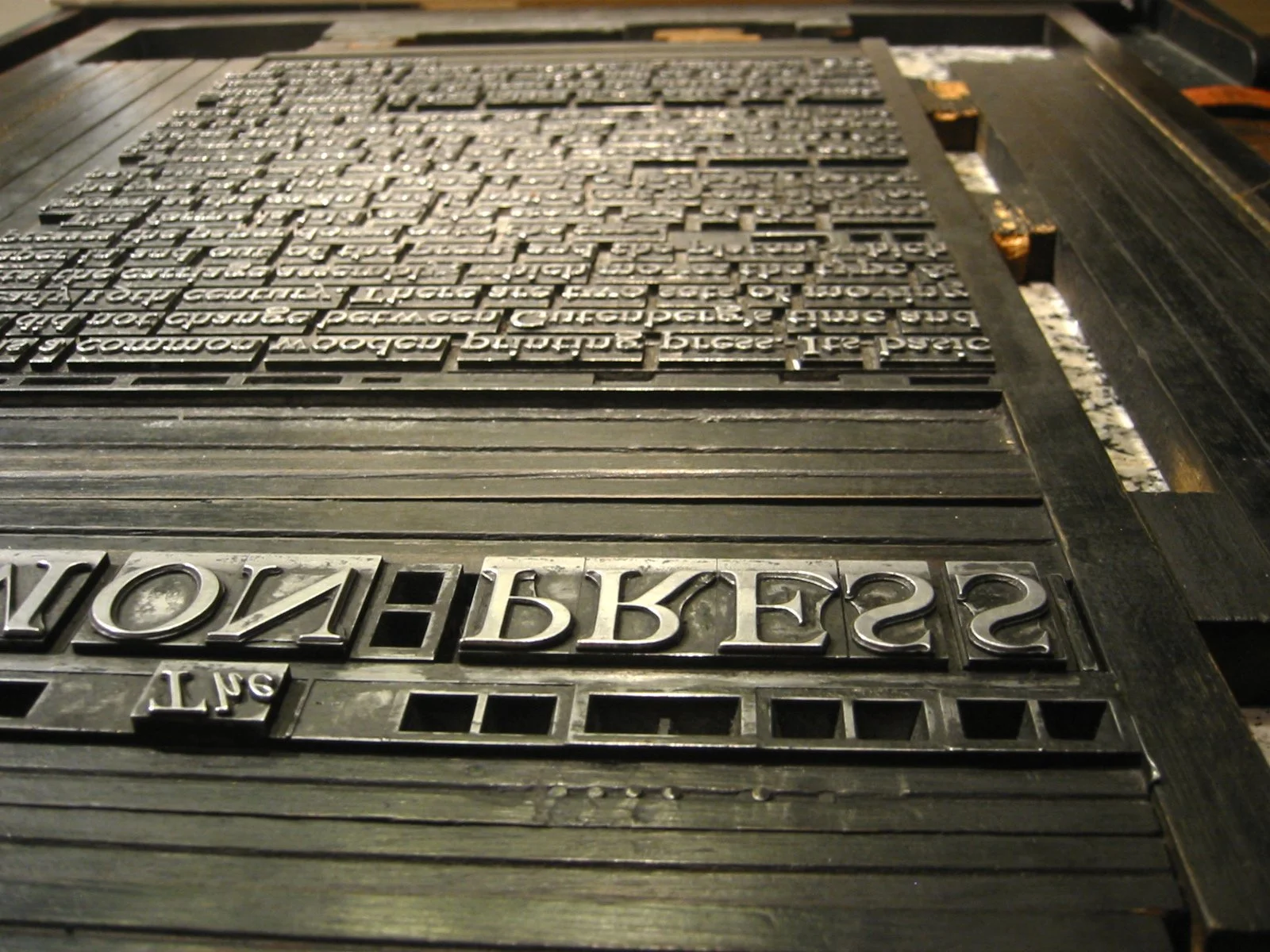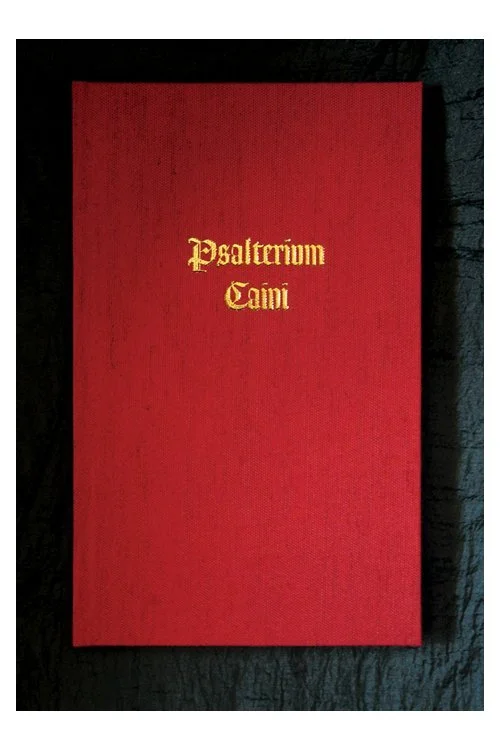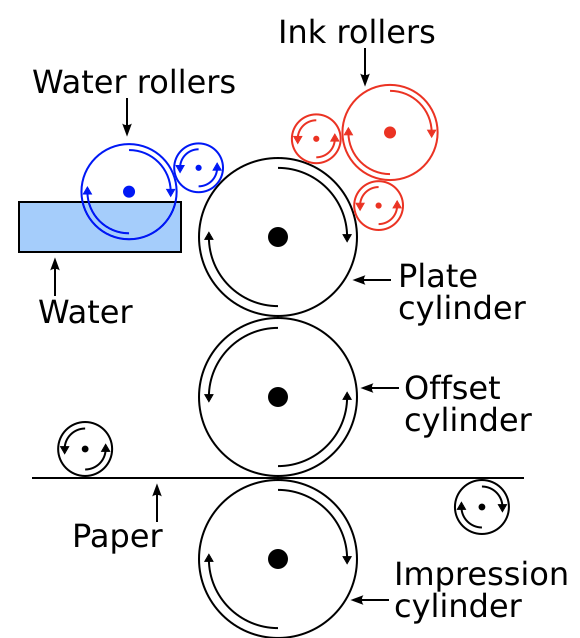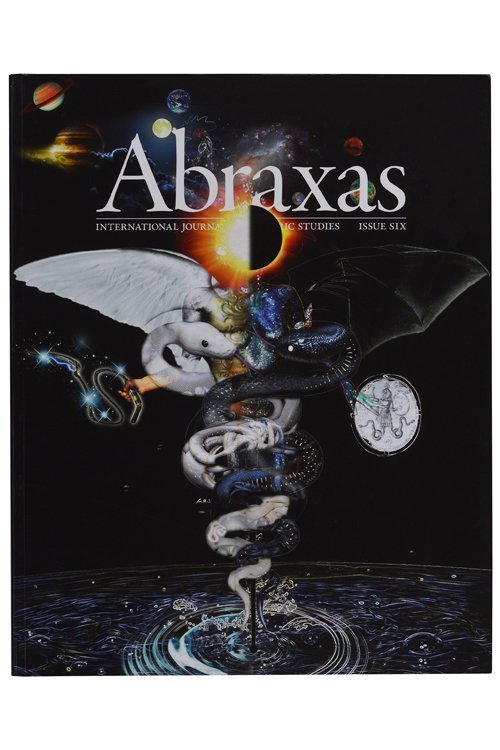Anatomy of a Book: Three Printing Styles
Jost Amman. Charta Lusoria. 1588. Via Wolfenbüttel: Herzog August Bibliothek, 2004. Digital library.
Hello readers, and welcome to the third installment in our monthly Anatomy of a Book series. The series has been a pleasure to write, and your response is very well received. We will offer a new post on the 28th of each month for the continuing year.
As we’ve begun exploring the facets of book construction and design, we have centered on the notion of anatomy and anatomical components: figuring the book as an embodied object, with flesh and sinew, skin and organ.
This month, we will discuss the processes by which content is impressed upon a book via printing: offset lithography, digital printing, letterpress, and more all offer unique and often tactile means of transferring content on to the pages of a work. Printing can be understood anatomically as reflecting the inner quality of a book: its mind, personality, character, and disposition.
After all, books are almost always repositories for content which imbues their outward design decisions with a reflective, even numinous form. Journals and notebooks may be one exception to this rule: their outward design may actually inform the content placed within by virtue of aesthetic and atmosphere. However, we find that a book’s content is what most often informs design choices and appearance.
As such, today’s post covers the chief processes by which contents are laid upon the page of a book. Because the entire swathe of printing methods hold their own respective details and processes, this essay will invoke a more general survey of these methods.
As with any design choice in the bookmaking endeavor, there are numerous variables which may influence the decision to utilize or refrain from a certain method. Some methods, like letterpress, are eminently more time-consuming and expensive. Yet, they also add components of tactility, quality, and aesthetic which can not be found in other forms of printing. With all of this considered, today we will examine three forms of book printing:
Letterpress
Offset
Digital
Each of these printing methods contains aspects which lend or detract from simplicity, aesthetic, tactility, cost and so forth. So, onward we proceed in order to uncover these aspects.
Letterpress:
Letterpress printing is a unique and historically fascinating mode of printing. In letterpress, we encounter the use of raised surfaces upon which ink is placed, later to be pressed onto the media at hand. This form of printing is called relief printing. In this instance, numerous tools allow a plate, or matrix, of raised and relieved surfaces to be pressed upon a page using a press — of which there are various kinds. A basic illustration below illustrates this concept.
Component A within the illustration represents the paper, and component B the matrix, or plate:
Letterpress is often referred to as movable type, meaning that individual components for letters, marginalia, and so forth can be moved or rearranged to create various pages and their layouts. A fine example can be seen below:
An example of a movable type layout. Via Jeremy Keith. Wikimedia Commons. CC 2.0.
Letterpress-style printing connects the printer to a very ancient history: movable type press finds its origins in China, where the Northern Song Dynasty inventor Bi Sheng (972–1051) incepted and developed the very first moving type. Later in the West, during the mid-15th century c.a. 1440, a familiar figure by the name of Johannes Gutenberg invented a moveable type press that fundamentally altered the course of history.
These incredible developments allowed printing to proliferate across continents and cultures, sometimes with profoundly unintended consequence. Therefore, on a grand level, the letterpress may be selected as a choice which situates the printer or bookmaker into the old printing lineages of Asia and the West.
Letterpress printing begins with the composition stage, in which movable type pieces are arranged or assembled to form the layout or typeset of the page. Then, a process called imposition takes place once the moveable pieces have been firmly tied or secured into a forme upon a press system. Finally, the pieces are inked and pressed in various systems — sometimes with multiple tasks being assigned to different participants. Any number of pages in a series may be pressed, and sometimes a entire roll of media is used in an ongoing printing process.
A phenomenal contemporary example of letterpress printing in the occult sphere can be found in the Xoanon Limited work The Psalter of Cain.
The Xoanon Limited book The Psalter of Cain.
This work is an exemplar, even in its standard edition. In fact, the pressing process has created an effect by which the reader can quite literally feel the indentation of each letter upon the page on which it was pressed. The image below, from our staff’s personal library, offers an angle that allows our readers to ever-so-slightly view these indentations — particularly as they are raised from the opposing page:
Indentation and letterpress detail in The Psalter of Cain.
Letterpress maintains this phenomenal and tactile hand-pressed quality that is both unique and sensory.
Yet, what of the downsides of letterpress? For one, letterpress can be highly time consuming — even arduous depending on the size of a given text. Letters and pieces must be arranged and assembled for each page. Further, there is the physical process for pressing which utilizes a considerable amount of energy. In turn, letterpress also tends to be eminently expensive when compared to forms like offset.
In summation, letterpress is a patient and tactile art which imparts an impressive and unique feeling to a book.
Offset:
Offset printing is yet another method of printing with its own unique system for transferring contents to a page. In offset printing, a kind of plate is also utilized. However, this inked plate is not the component which meets the page itself. Rather, the ink on the plate is offset to a blanket of rubber, which is then unites with the pages in a multifold process.
Offset printing, as we will see, is often combined with a lithographic element to offer up the method of offset lithography. This form of printing utilizes the principle by which water and oil (ink, in this case) repel one another. In short, areas of the offset plate in which the image or lettering will be added are combined with a wet component that repels ink from the spaces in which no image is meant to be present. This is a fascinating process the combines the cunning of the printer with simple yet effective physics.
Offset printing contains an industrial component, with rotary devices, drums, bands, and automations at hand. It is no surprise then that offset printing came to be incepted during the industrial heydays of the late 18th and early 20th centuries.
During this period in 1875, Englishman Robert Barclay developed the method for printing upon tin media. While, away in the United States, one Ira Washington Rubel developed the method for use with paper. Then, in mainland Europe, a figure by the name of Caspar Herrmann developed prototype machinery for the offset process. Further developments took place within a number of fields and professions across continents.
The great number of variables and machinery forms found within offset cannot be fully detailed here. So, for simplicity’s sake, we will detail the basic process.
In the simplest conception, two cylindrical drums are chiefly utilized: one contains the rounded plate upon which the initial ink is placed. The second — the offset cylinder containing a wrapped rubber blanket— rolls against the first plate, transferring the ink. Adjacent to both of these cylinders are separate rollers for ink and water, both coming into contact with the original plate. Finally, paper media is rolled between the offset plate and an an impression cylinder, which both fixes the paper and presses the ink upon it. A simple example of this can be seen below:
Basic illustration of the offset cylinder schema. CC 3.0.
Offset printing, like all printing methods, has pros and cons related to feasibility, time, costs, and so forth.
For one, offset printing tends to improve in consistency from a form like letterpress printing. This has to do with the way in which the offset cylinder blanket melds with the paper in a repeatable fashion. By the same token, this, in some ways, diminishes the individuality and singularly tactile quality found in letterpress printing.
Offset printing, however, tends to fall in the less-expensive range of printing styles which still maintain an extremely high quality of print. In part, this is due to the automations which are utilized — which also cut down on the time it takes to print any number of given copies or editions.
A lovely example of contemporary offset lithography found in the occult sphere can be found in the Abraxas Journal series published by Fulgur Press:
Volume #6 of Fulgur Press’ Abraxas Journal.
Digital
The final printing method that we will overview here is digital printing. In this form of printing, a digital image, or layout, is prepared on a publishing software or application, and programmed to be sent to a inking tool like a printer of the laser or inkjet variety.
As with our two previous mehtods of printing, digital printing holds its own unique and contextual history. The age that this form of printing stems from can be found in its name — digital. As such, you will found that we have taken a trip today not only through printing, but through time and eras.
During the 1980s in particular, numerous needs and necessities coupled with the increasing refinements of digital technology of the time. This lead to individuals like David Coons and Graham Nash of IRIS Graphics (an inkjet innovator) to develop these methods. Not to mention, larger parties in the form of established companies like Kodak, Xerox, and Epson.
The first notable subset of digital printing technologies is the inkjet printer. Inkjet printing begins when a digital application is is used to develop an image, layout, or publication typeset. The digital image is then linked and fed into a printing device, of which there are countless household and industrial exemplars.
The printer then uses an arrangement of heads, and pressurized pump systems to spray or propel ink on to a substrate media (like matte or glossy paper). Often, electrostatic methods are used to accomplish this task, which we encourage our readers to inquire about further.
The second notable subset of digital printing is the laser method. Laser printing likewise utilizes an electrostatic process in conjunction with our old friend, the cylindrical drum. In this instance, the electrostatic process involves the directing of a laser light over a negatively charged drum. The inking component pertains to a powdered form of ink: also electrically charged. Then, a heating process is required to bond the extremely fine-powdered ink to a substrate media.
Magnified image of a color laser print media. CC 3.0.
Again, we find the presence of upsides and downsides to these methods. For one, on a small-scale, anyone with access to a digital publishing application and a printer can formulate their own digitally-printed publications. In turn, access is bestowed to the small-scale printer.
On the other hand, while digital printing can often be expensive, this is recouped in the guise of time and efficiency in relation to offset and letterpress forms.
In terms of tactility, the indentations, individualities, and idiosynracies of letterpress and offset are all but flattened. Digital printing is extremely precise and repeatable. Yet, a tactility all its own takes the place of bumps and dents: pages with digital printing can offer a sleek and polished look that reflects the precise technology of the tool.
In the contemporary occult publishing arena, many zines and small-press publications utilize digital printing. For the aforementioned reasons, this style of publication lends itself well to digital printing.
Overview:
In all, we have examined what are perhaps the three primary forms of printing in contemporary spheres like occult publishing. Each method reflects the diversity that can be found within the spectrums of practicality and aesthetic, form and function. Beside the countless variations of technique found within each method, numerous other methods of printing are available to the bookmaker or publisher. One of our hopes in writing this month''s essay is that we will have spurned an exploration into these methods.
Perhaps, if we are lucky, we will even prompt the budding binder or publisher to take a leap and explore one or more of these methods for their own work at home, or in a forthcoming publication.
As we originally stated, a book’s content serves a role as its personality or ‘mind.’ Just as this is true, we find that each printing method has its own respective personality and traits. We enjoy, and revel, in seeing how the content of a book is expressed in printing methodology — a kind of “meeting of the minds.” We hope you will too.
In our coming Anatomy of a Book series, we will explore the connective tissue and muscle of a book: it’s binding and assemblage in the form of thread, glue, and bands.
We look forward to sharing it with you and, as always, show gratitude for your readership!
All the best,
— The Occult Library staff








